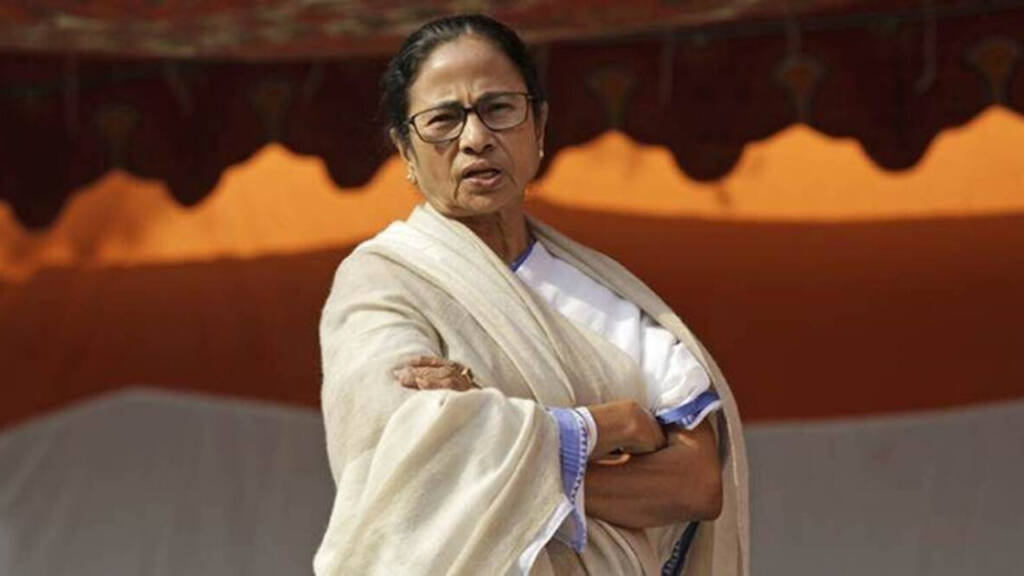A few years ago, in a speech in West Bengal, the then BJP President Amit Shah had said that the state’s share in the nation’s GDP was 25 per cent at the time of independence and now it is at a mere 4 per cent. So the question is, how much of the promised ‘poriborton‘ has Mamata Banerjee done in the state? And, who is to be blamed for this destruction of the economy of West Bengal?
Are these the prevailing socio-economic policies at the national and international level or the incompetent governments of the state? Unfortunately, both of these contributed to make Mamata Banerjee’s West Bengal from one of the richest regions in the country to one of the poorest.
If we look at the history of the political economy around the world, poverty and Communism often go together. Communism often comes to any country or region and is followed by poverty, authoritarianism, and restrictions to freedom of speech and one-party rule.
The curse of Communism reached to the Indian state of West Bengal almost four decades back in 1977 and destroyed the social, cultural and economic power of the state. The regime which replaced the Left Front government after 34 years was the Mamata Banerjee-led AITC – known to be ‘Left of Left’, ideologically.
Mamata came to power by opposing the economic reforms being implemented by Buddhadeb Bhattacharya, the Communist CM who came to power in 2000. Bhattacharya wanted to bring private industries to West Bengal and acquired Special Economic Zone (SEZ), against which the Mamata Banerjee-led TMC organized a protest with the slogan of ‘Ma Mati Manush’ (Mother, Motherland and People) and this led to Nandigram violence in 2007.
Later in 2008, Mamata Banerjee’s opposition to Singur Tata Nano Controversy also won her immense publicity and ultimately Banerjee was elected as the CM of West Bengal in 2011, thanks to her left to left stance on political economy.
During the regime of the Left, union strikes, harassment of businessmen and industrialists were common phenomena. The communist leaders defamed the industrialist as ‘bourgeois’ and kept them at bay. And, this continued (actually accelerated) during Mamata Banerjee’s regime because of the TMC government’s ‘native vs outsiders’ (Bengali vs non-Bengali as most of the industrialists are Gujaratis and Marwaris) pitch.
The share of manufacturing in the state GDP declined from 21 per cent in 1980-81 to a mere of 13 per cent. The Bank deposit in the state declined from 11.4 per cent of pan-India deposit to 7 per cent. On the infrastructure front, the index of Mamata Banerjee’s Bengal was 110.6 in 1980, which means it was 10.6 per cent better than the rest of the country and it declined to 90.8 points. On the other hand, the index figures for Odisha gradually improved from 81.5 to 98.9 points.
On Health and Education indicators, the state has been one of the poorest performers in the last few decades. West Bengal was on eighth place in the list of Indian states by HDI and slipped to 28th in 2018– a massive 20 place decline under the rule of the Mamata Banerjee-led TMC.
At the time of independence, Kolkata was among the most productive cities of the country. Now, as per the report by PwC, Mumbai will be 10th in cities by GDP (Purchasing Power Parity) by 2025 with 594 billion dollars and Delhi will be on 19th place with 482 billion dollars while Kolkata does not even appear on the list.
The state is among the least industrialized states and fares much worse in every socio-economic indicator. The state used to have the highest per capita income at the time of independence, but now its place has slipped to the 19th place. This data alone is enough to tell us how badly the previous governments performed and how the trend even continued under Mamata Banerjee’s rule. At the time of independence, it produced a quarter of India’s GDP, and now it is on the sixth position, far behind Gujarat whose population is almost half that of West Bengal.
Mamata Banerjee talks about the socio-economic welfare of the people but the harsh fact is that the state has one of the worst taxes to GSDP ratio (the debt to GDP ratio) in the country.
The simple question is, if the state government does not have money, how will it spend on welfare schemes like health, education and PDS? On the other hand, the state is sitting on a huge pile of debt, which is accumulated primarily due to the previous Left Front government. This clearly indicates that Mamata Banerjee has also contributed to this.
Moreover, the state also has one of the lowest capital expenditures. The main reason behind the issue is the excess revenue expenditure by the Mamata Banerjee government on inefficient welfare schemes. The inability to raise revenues and a tendency to overspend on revenue expenditure too have crippled the capital expenditure in the state. Lower capital expenditure threatens the sustainability of the state’s growth path, as well as the state’s ability to lower the debt-GDP ratio.
The Left Front and the Mamata Banerjee-led TMC Governments have clearly destroyed the economy of the state and a regime change has now become a necessity to put Bengal back on the path of growth. Only a regime change can bring back the golden days of ‘Amar Sonar Bangla’.
